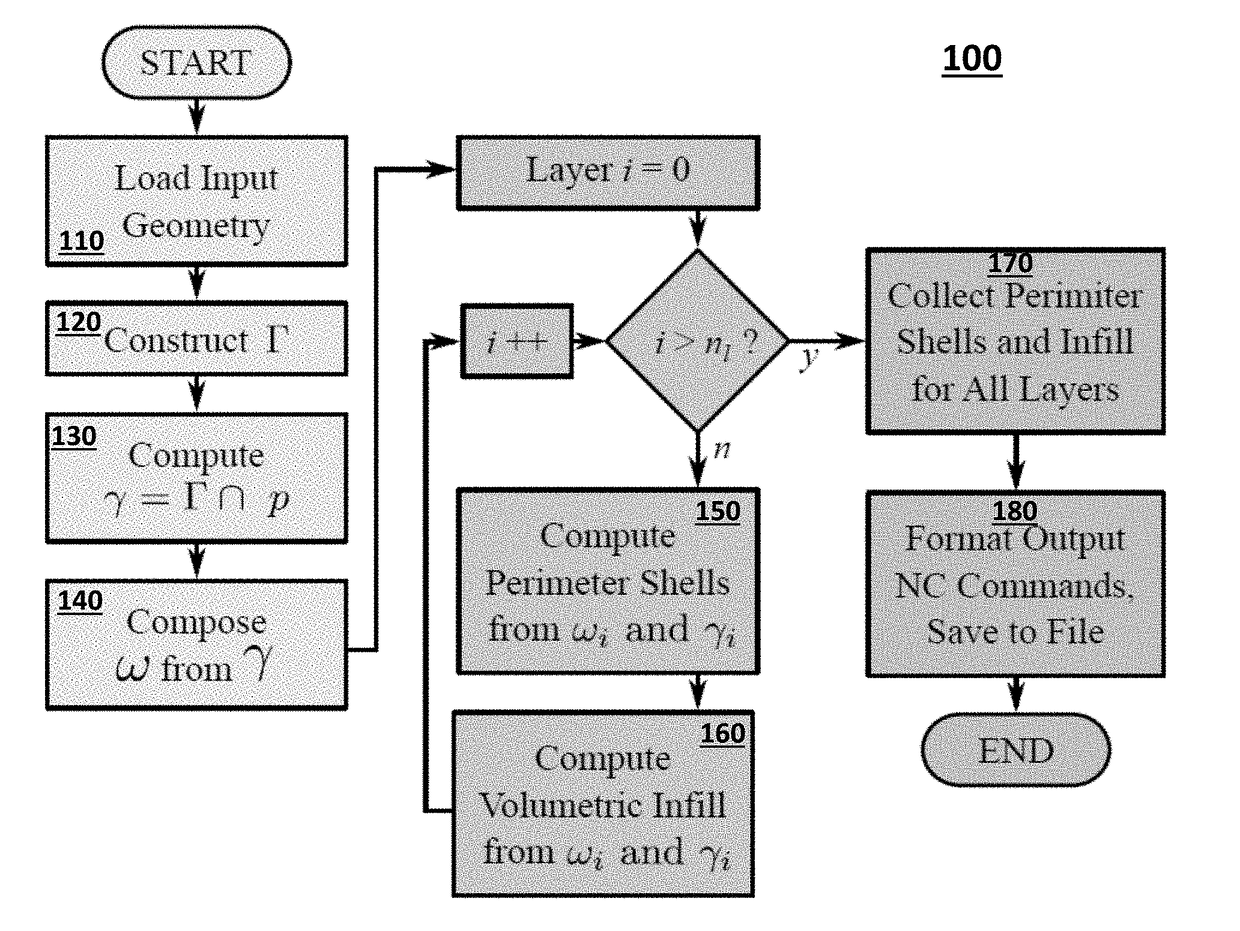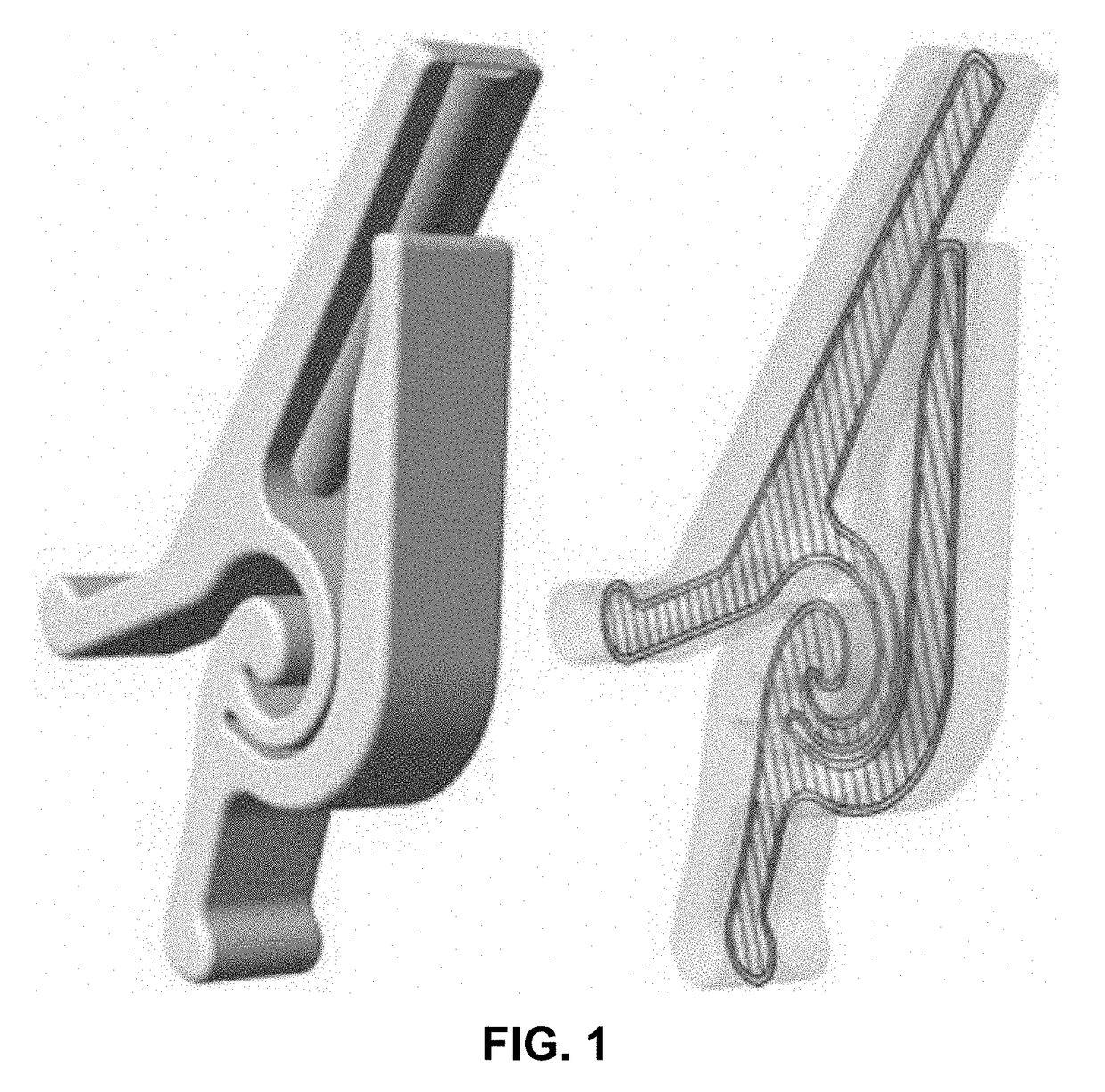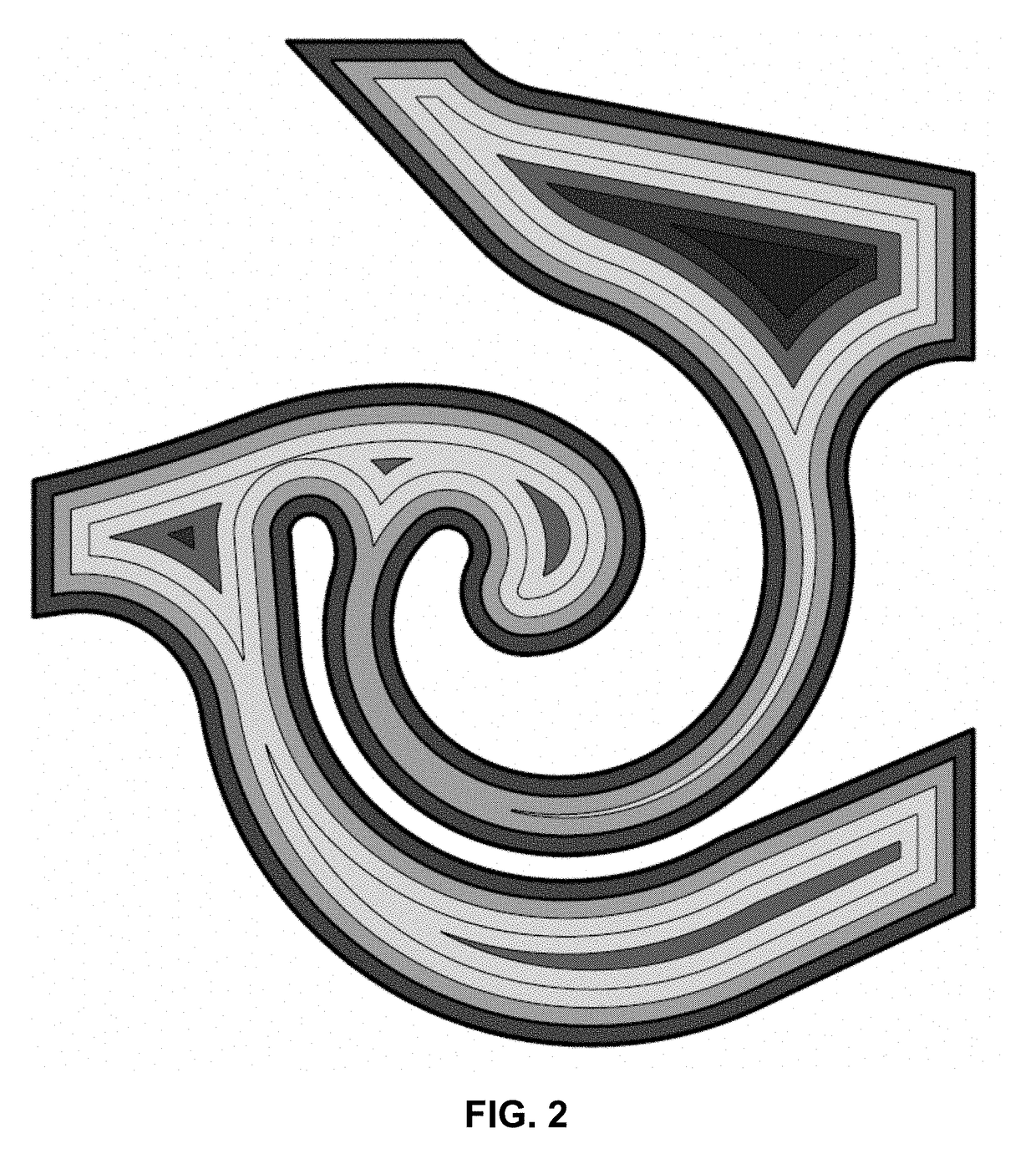Implicit method and an algorithm for flexible functionally tailorable slicing for additive manufacturing
- Summary
- Abstract
- Description
- Claims
- Application Information
AI Technical Summary
Benefits of technology
Problems solved by technology
Method used
Image
Examples
Embodiment Construction
[0052]Presented herein is a slicer in accordance with the present invention, wherein relevant functional fields may be incorporated into the toolpath generation procedure. Unlike prior approaches, exemplary slicers are based on an implicit mathematical formulation; that is to say that the toolpath is based on the level sets of functional fields, not upon transformations applied to the input geometry. Such an exemplary “implicit slicer”100 includes the following steps, where the variables are illustrated in FIG. 3.
[0053]Referring now to FIG. 4, at block 110, the Slicer 100 receives and parses an input model. At block 120, the slicer 100 reconstructs the domain boundary Γ. At block 130, the slicer computes individual layer boundaries (γ) by intersecting a series of parallel planes (ρ) with Γ. At block 140 the slicer 100 constructs, for each layer, the layer domains w from their enclosing boundaries γ. At block 150, for each layer, the slicer 100 computes perimeter shells by finding th...
PUM
 Login to View More
Login to View More Abstract
Description
Claims
Application Information
 Login to View More
Login to View More - R&D
- Intellectual Property
- Life Sciences
- Materials
- Tech Scout
- Unparalleled Data Quality
- Higher Quality Content
- 60% Fewer Hallucinations
Browse by: Latest US Patents, China's latest patents, Technical Efficacy Thesaurus, Application Domain, Technology Topic, Popular Technical Reports.
© 2025 PatSnap. All rights reserved.Legal|Privacy policy|Modern Slavery Act Transparency Statement|Sitemap|About US| Contact US: help@patsnap.com



